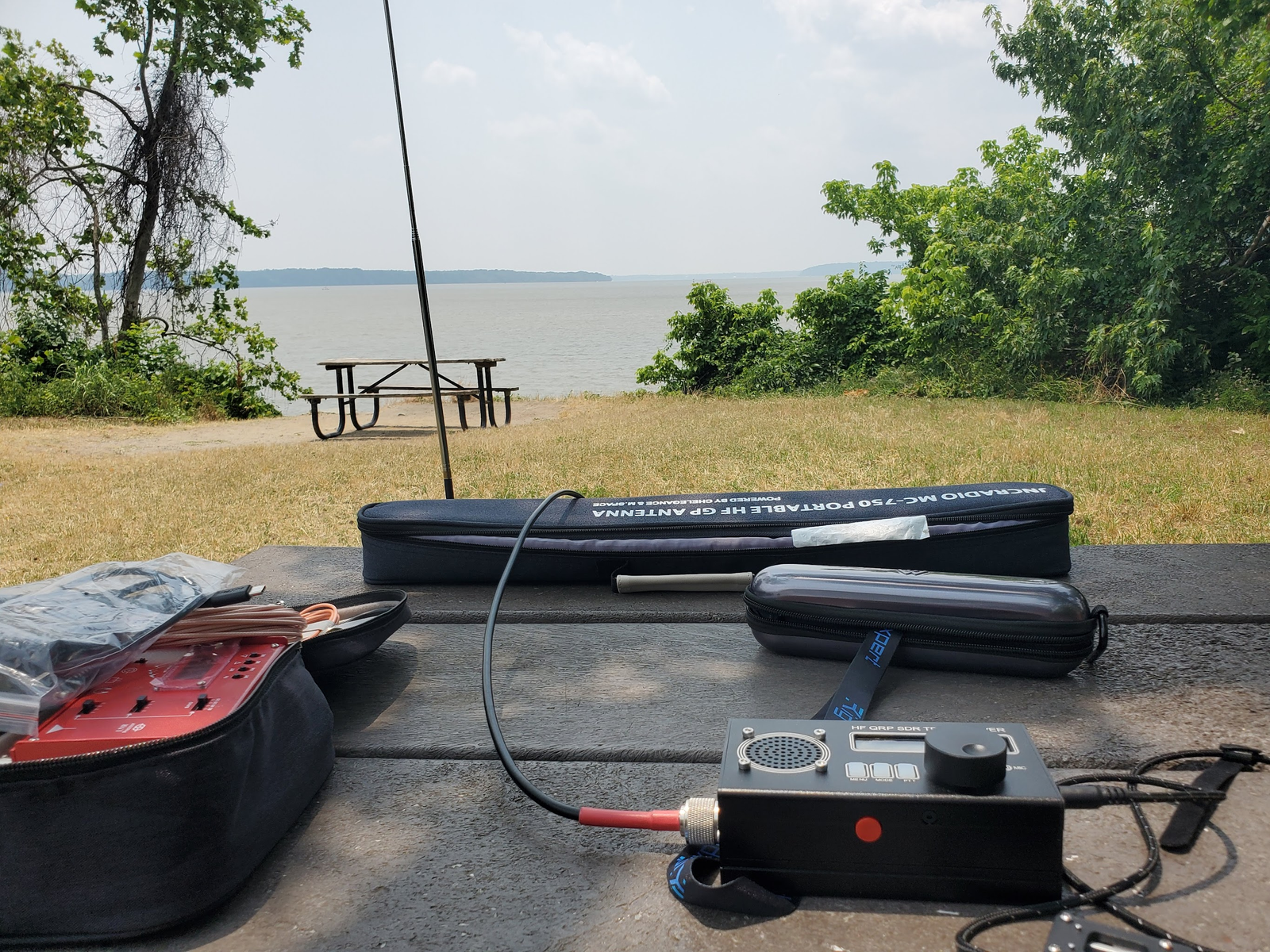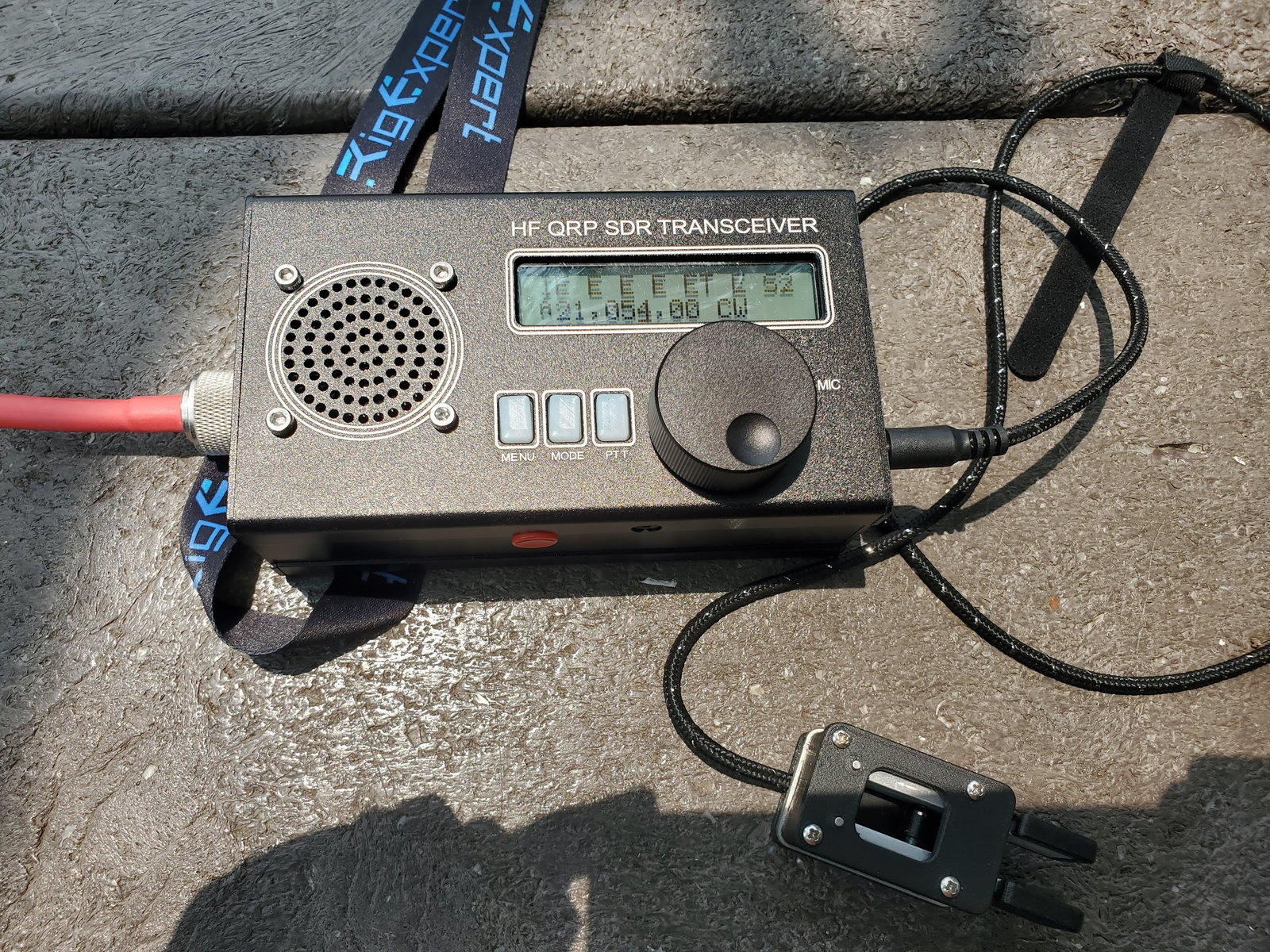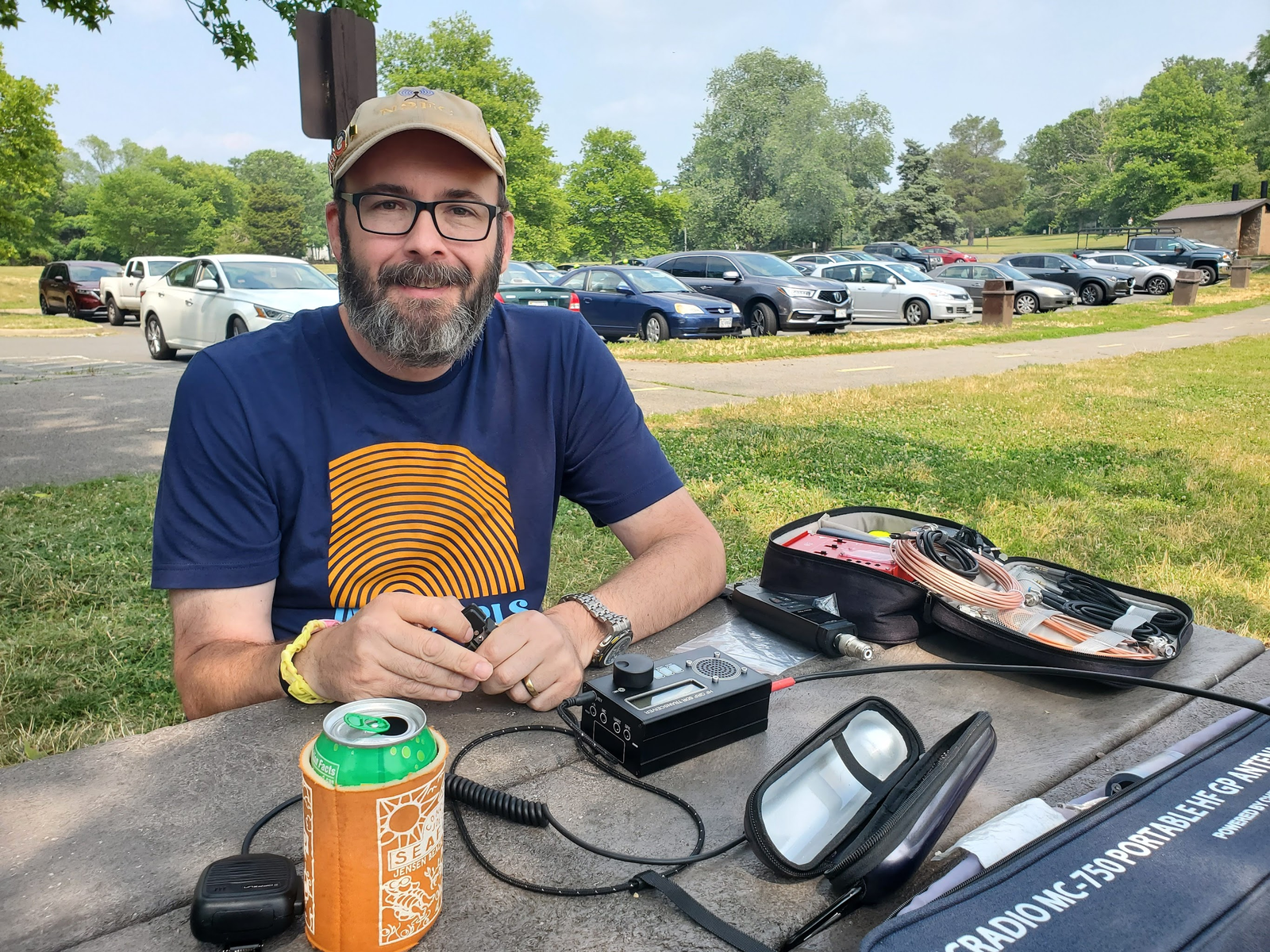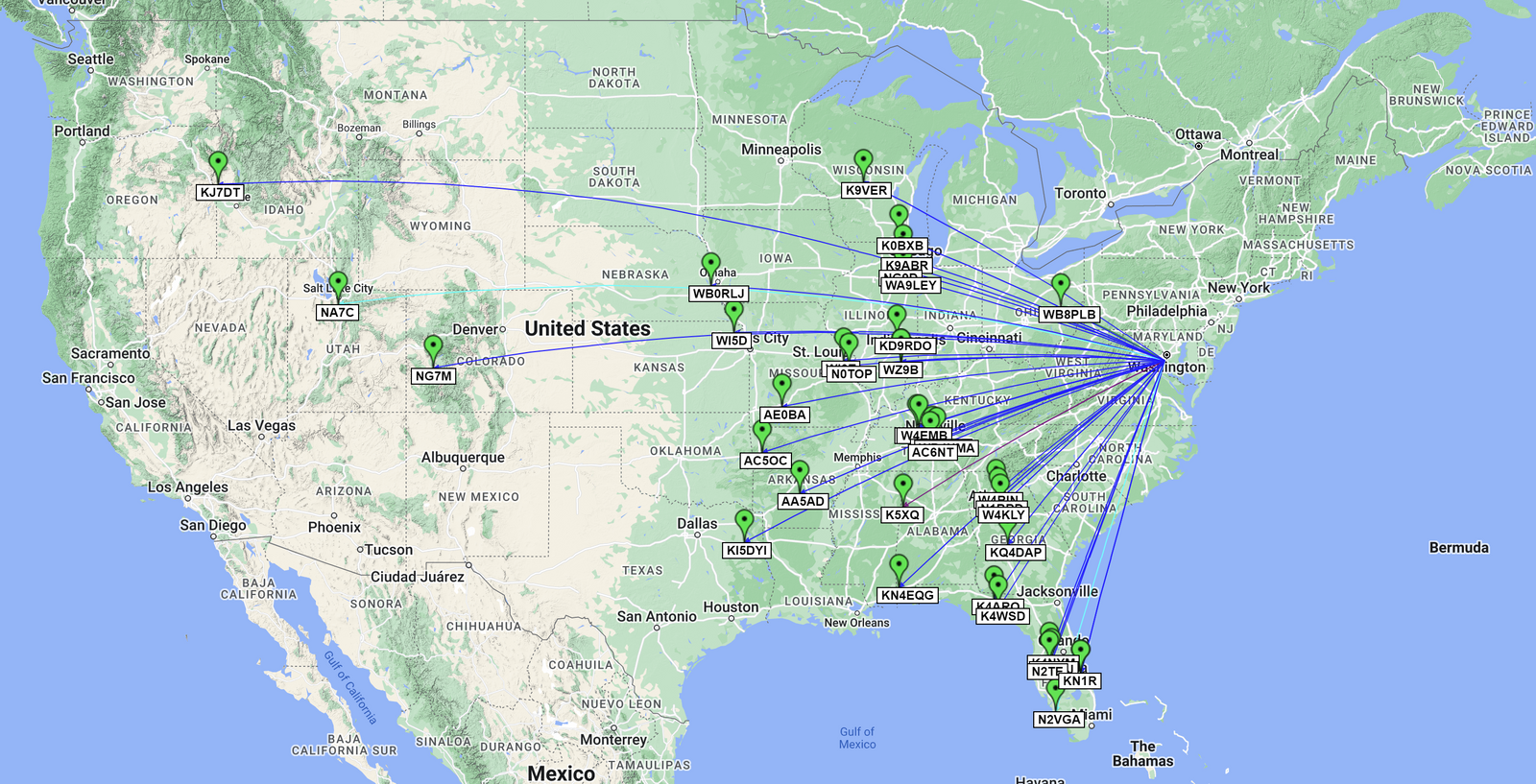POTA Activation #62: A QRP 4-fer Activation Testing a New Rig (VA) (6/17/2023)

In preparation for an upcoming trip to Greece, I had been doing some field tests of my Mountain Topper MTR-4B and I had noticed that the receive audio on it was super quiet, to the point where it was getting hard to listen to signals, even with amplification. So I decided to try another rig that I had recently picked up to play with, a uSDX clone that I had picked up from the Banggood online marketplace in China.
I had purchased it for $139 on sale, and to be honest, I wasn't expecting great performance. Reviews online were mixed with some people having good results and others having issues. However, at that price, I was willing to take the risk and see if I could have some fun with it. And now, with my most portable radio having some issues, it was fortuitous that I had a backup.
The rig is capable of operating on 8 bands from 160-10m, has an internal battery, operates on CW, SSB, AM, and FM, has variable filters, and a surprisingly effective CW decoder built in. It claims up to 10W power output (I was getting about 7.5 in my initial tests), and while chunkier than the MTR-4B, it is surprisingly compact considering it has its own battery. Like other rigs of this size, it does not have an internal antenna tuner.

I had done some back yard work with the rig and had promising results, so I decided it was time to get it into the field for a POTA activation to test its mettle and see how it would fare under potential pile-up conditions. I decided to pair it with my Chelegance MC-750 so that I would not need to use an external antenna tuner (although I did bring one, just in case) and my N0SA designed SP4 POTA/SOTA Mini Morse Code Magnetic Paddles to give a real test of the entire setup I would likely deploy in Greece.
I was able to very quickly get a perfect match with my MC-750, and I noticed as I was preparing to spot myself that my good friend Ed, W4EMB was activating a park at that very moment. Naturally, I had to get him in the log, so I sent him a hello and got a solid signal report back from him. I thanked him for the Park to Park and told him he was sounding great on 20m from Tennessee, and then moved down a bit and found a clear frequency on 14.059 and started my activation.
Almost immediately, I heard back from a station in Arkansas, then I heard from another LICW friend, Rin, W4RIN in Georgia. Great as always to get him in the log. Then I made contact with Texas, Illinois, Wisconsin, Illinois again, Arkansas, Missouri, Florida, and Alabama. The rate wasn't super fast, but the rig was working well. I was getting mostly strong signal reports with a few weak ones in there, but it was working, and from what I could tell, it was working well.

One of the advantages of this rig is the large number of bands available to me on it. The MTR does 4 bands (80m, 40m, 30m, and 20m), only 3 of which are actually useful in a field situation (I don't have any field capable 80m antennas). The uSDX adds some higher and lower bands to the mix, so I was excited to see what I could do with them.
I retuned my Chelegance MC-750 for the 17m band and began calling CW. For a while I didn't get any takers, but finally got a contact with Alabama where I received a 579 signal report and he was popping out a solid 599. After a bit more time with no responses I moved up to the 15m band and got Florida and Utah in the log before before moving down to the 40m band to see if I could get some more contacts. Interestingly enough, I just made one with a station in Ohio, who heard me at 449. After a while of calling CQ and hearing nothing I decided to move back to 20m.
First I decided to look at the spots and see if I could get another park to park contact, and I did with a station in Kansas, and then again with a station in Colorado. Then I decided to call CQ again and made contacts with Tennessee, Nebraska, and Georgia. After a bit of a lull, I hunted Park to Parks in Florida, Georgia, and Florida again. It turns out that each of them were in 2-fers (and I was in a 4-fer) so many P2Ps ensued.
I went back to calling CQ and heard from Florida, then got a second call from Ed, W4EMB, this time from his house also in Tennessee. After a quick chat telling him I was testing a new rig, I heard from Florida again, Wisconsin, Tennessee, Florida, Illinois, Florida, Illinois, and then my longest distance contact of the day with super hunter KJ7DT in Idaho (who heard me surprisingly well). Next up was Missouri, Tennessee, Illinois, Missouri, and finally Georgia.
I had tried a few times to make contacts on SSB for some park to parks ... but nobody heard me, so I'm guessing that there is something wrong with it on the voice side. I'll have to hook it up to the spectrum analyzer to see what's going on, but it works well on CW, and that's primarily what I bought it for.
My wife and daughter drove up and brought me some lunch and we had a picnic at my beautiful operating position on the banks of the Potomac River. By the end of the day I made 37 contacts on CW and had a lot of fun in about 2 hours and 39 minutes. It wasn't what I'd get at 100W, but it was a whole lot of fun with a station that weighs almost nothing. This little rig, which costs less than the antenna it was connected to, certainly did the job. Additionally, it did it entirely on its internal battery. Not bad at all.

Activation QSO Map: Green Pins = CW / Green Lines = 40m, Blue Lines = 20m, Purple Lines = 17m, Cyan Lines = 15m
Gear used in this activation
- uSDX 8 Band QRP HF SDR Transceiver
- Chelegance MC-750 Vertical Antenna
- RigExpert Stick Pro Antenna Analyzer
- CW Morse SP4 POTA/SOTA Mini Morse Code Magnetic Paddle (N0SA Designed)
- Samsung Galaxy S10+
- HAMRS Logging App

